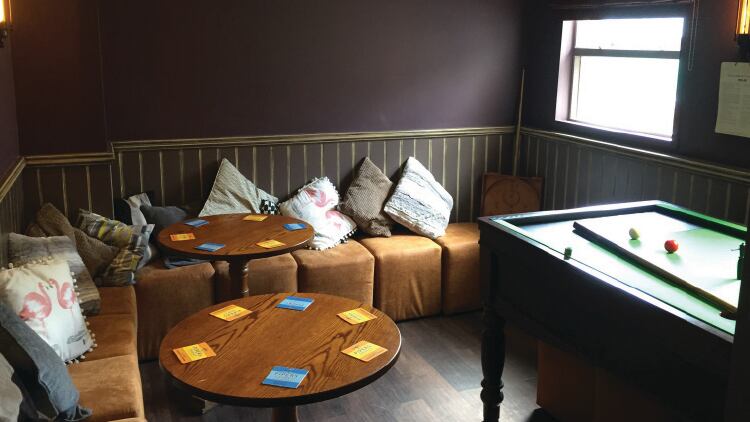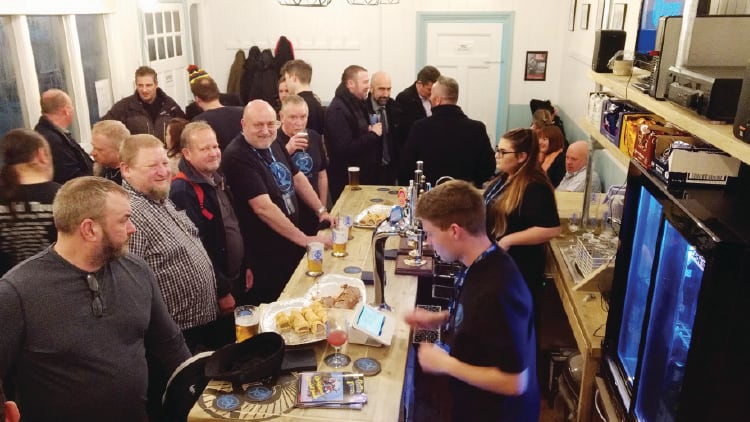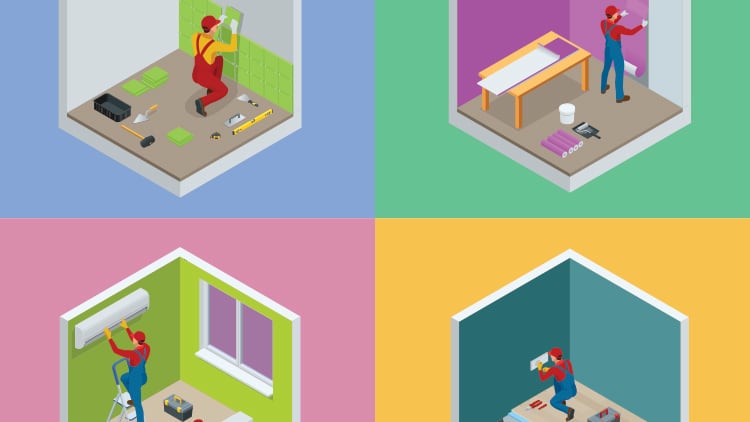Changes in your pub’s layout and aesthetic don’t have to cost, or move, the earth to make a positive contribution to profit and loss sheets.
Without being drawn in to gimmicky space hacks, pubs need not look beyond their four walls, or at knocking them down, to add a significant new dimension to their venue.
While some operators may have the capacity to undertake more extensive projects to convert storage or loft space into accommodation, private dining, or entertainment facilities, an increasing number of businesses are creating ‘snug spaces’ from disused nooks and crannies to great effect.
Simon Hall, director of agency at Fleurets, highlights that the first port of call in maximising your pub’s space is evaluating what’s at your disposal and how different areas are contributing to business.
“Reassessing the use of existing space can be a beneficial exercise if you are looking to increase your revenue,” he says.
“There are often options to adapt existing parts of your property into trading space, for instance, converting an unused office into a private dining room, or using an empty basement as a games room.”
Case study: The Fulford Arms’ snug
Chris Sherrington and Chris Tuke, who took over the GBPA finalist Fulford Arms (see p33) in 2014 wanted to transform the slightly tired community local in York into a vibrant music venue.
After an initial refurbishment of the main trading area in July 2014, the pub continued to serve food, however the size of the kitchen and only one trading area made it very difficult to balance between the live music and food.
In 2017, they decided to shut the kitchen and better use the space by providing a ‘snug’ and traditional games area allowing customers in search of a quiet pint somewhere to get away from the main bar and live entertainment.
Sherrington explains: “The key focus was for a flexible area that could provide a space for locals – support our involvement in the local bar billiards league – and also be used for private meetings and as an accessible dressing room if required.”
The snug also contains blackout blinds and dimmable wall and ceiling lights to help cater for customers with sensory disabilities.

Moving inside out
Fleurets’ Hall highlights that the most overlooked pub spaces are, often literally, right on the operator’s doorstep.
“Often the most under-utilised part of a public house is the outside area” says Hall. “Developing gardens, patio space, decking or roof terraces into new or improved trading space, can not only increase your covers but, if executed well, can create a unique selling point that will draw in new custom.”
This is echoed by DV8 Designs managing director Lee Birchall, who has found that moving covers into an outdoor space, in comfort, doesn’t have to mean committing to heavy-duty building projects. He explains: “Because cost is king at the moment, the thing I’m finding is that ‘inside out’ spaces are elaborate but a lot cheaper.
“Publicans tend to have outside spaces that would have been a patio, but now they’ve got almost-conservatories that have a fold-back roof that can give them the extra covers they need. They may not get the luxury of being ultra-warm in the winter but, in the summer, it can give more of an inside feel, and the cost of these structures is much cheaper than building a bricks-and-mortar extension.
“They’re made of powder-coated aluminium and have retractable roofs, a bit like on the Continent. If you go to Spain or somewhere like that you’ve got, sometimes enclosed, front spaces where customers can sit out on the patio.”
Growing trends
Christie & Co’s head of restaurants Simon Chaplin states: “With a bit of thought, ‘dead’ spaces can become more inviting and add value to your setting.”
Chaplin says: “Following the recent business rates revaluation, operators are becoming increasingly aware that every square foot of your business must earn its keep. Big may
not always be beautiful when it comes to running costs, so maximising your current space must be a high priority if you are seeking to grow sales.
“Gone are the days when many pubs had more living space than trading area on the ground floor. Open-plan pubs have become the way forward, but don’t go knocking out walls just yet. There is strong demand for private dining rooms and meeting spaces, and while such spaces may not be utilised every day, it is more manageable and profitable to have these areas available in many cases.
“The space doesn’t have to be big, 10 to 12 seats is optimal, and can even be provided on the first floor, especially if there are views to go with it.”
Chaplin adds that for food-led pubs, chefs’ tables have become a growing trend that maximises theatre around food taking up minimum space.
He adds: “Continued consumer demand for TV chef programmes alongside an ever-growing interest in food and where it comes from has prompted many to bring the customer into the kitchen. Offering this ‘event space’ a few nights a month for a table of six or eight in the corner of the kitchen can help boost trade on slack nights, fine-tune your kitchen’s skills and raise the profile of the food offering, particularly if those attending are bloggers or Instagrammers.”
Case study: Micropubs
Phil Ayling, founder and director of micropub operator BeerHeadZ, and operator of 2017 CAMRA East Midlands pub of the year – Just Beer – in Newark-upon-Trent, Nottinghamshire, has transformed former hairdressers, estate agents, disused artists’ studios and a cabman’s shelter into micropub sites.
Ayling, who operates five micropubs, advises: “You’ve got to really think about the space you’ve got. At Just Beer we had the luxury of actually putting walls in, we took everything out. You’ve got to sit and think long and hard where you need things because once they’re in there it’s both expensive and impractical to change
it around.
“In the other pubs we’ve gone in and the walls have already been there. The problem then is that everything is a compromise.
“Don’t underestimate what you can actually do with the space though. When we went into the cabman’s shelter, now BeerHeadZ in Nottingham, I didn’t think for one second that it’d make it into a pub, but we did it – the place is open, we’re a functioning pub and we’re making money.
“Another great example is the draughtman’s alehouse on the station platform at Doncaster – that’s a little tiny place and they’ve made the best of it. It’s astounding what you can do in a little tiny space. I’m sure there’s countless other examples. Don’t give up, it is do-able.
“When you are going into this game and creating micropubs, compromise is key. If you’re going into an existing pub, something that’s been designed and built as a pub, then everything should be in place already, but if you’re creating a pub you’ve got to make compromises along the way.”

Go with the flow
Fleurets’ director Hall adds that rather than redesigning a space from top to bottom, sometimes a simple reshuffle of a site’s furniture can have a sizeable impact on a space’s contribution to a business.
“Another opportunity to increase income within your existing space is to ensure you have the right tables and chairs.
“It sounds simple but there is a balance to be struck when considering layout, size and style, as busy properties need to turn covers more quickly at peak times, whereas quieter periods need to encourage dwell time to maximise spend.
“The requirements vary from business to business but getting it right will pay dividends.”
Again, Birchall of DV8 Designs echoes the importance of getting the positioning of furniture, covers and customers in maintaining a venue’s flow. “I think need outweighs design sometimes. People will put tables in really unusual positions where it’s difficult to get in or you’re not, as a couple, facing each other. This tends to happen more in café bars, urban locations or coffee shops rather than bars and restaurants, though.
“In a small outlet where the operator needs to get those covers, they just force them because they need them. Some of the luxury of being able to manoeuvre around the furniture is thrown out of the window.
“If you want to maximise covers but sacrifice venue flow, you’ll lose numbers in the end. You’ve got to get your flow right: how the waitress comes out of the kitchen, how the bar staff come to collect glasses, how people come from the front door and get to the bar.
“If a bar is awkward and pokey, and difficult to get into, you’re not going to be operating constantly. You want something that feels nice, relaxed and chilled.”

